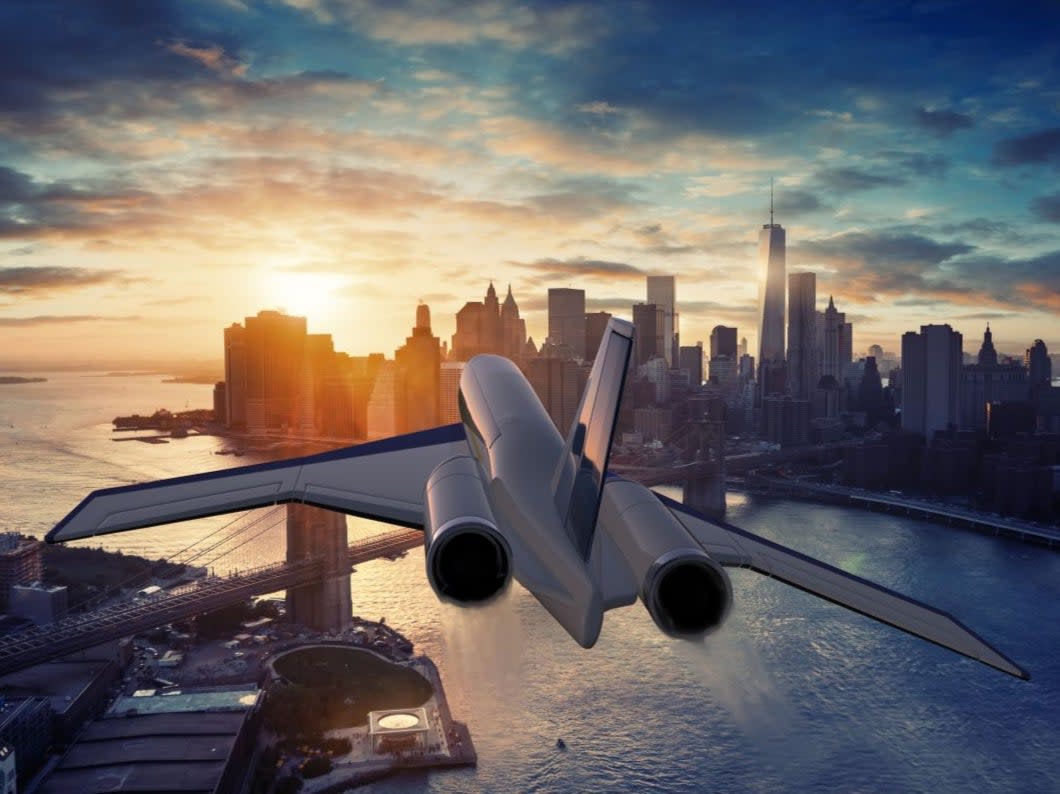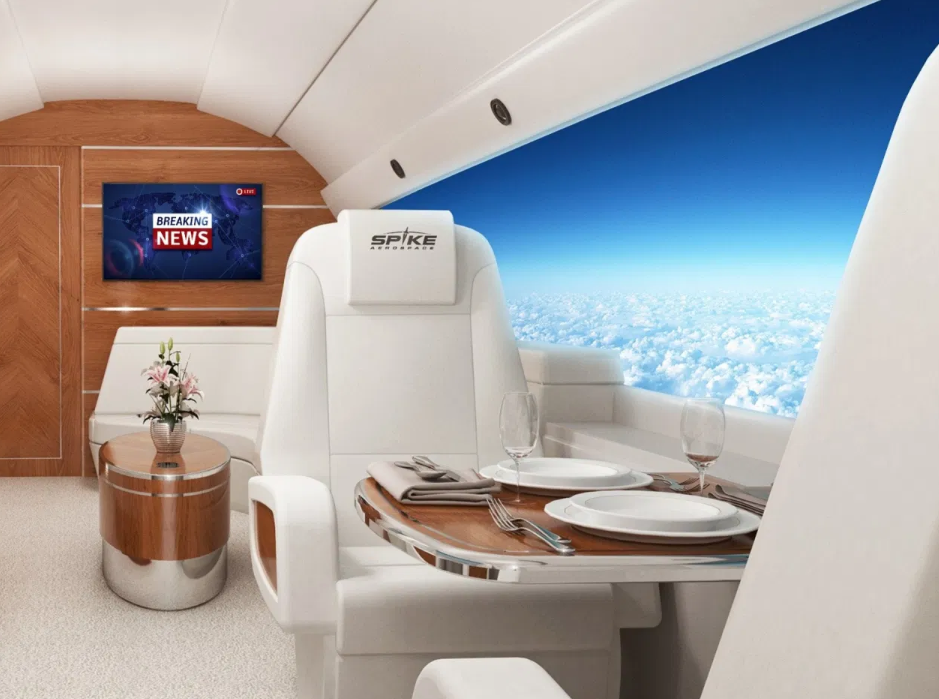New supersonic jet could fly London-New York in 90 minutes

A new supersonic jet in development aims to cut the flight time from London to New York to just 90 minutes.
Spike Aerospace’s 18-seater S-512 aircraft will initially come close to matching the speed of Concorde – Mach 1.6, or 1,100mph – when it enters commercial service in 2028, with an expected transatlantic journey time of around three and a half hours.
However, the company has big plans to up the speed to Mach 3.2 and reduce the flight time to an hour and a half in the following decade.
Spike Aerospace founder and CEO Vik Kachoria told The Telegraph: “From the beginning of time, people have wanted to travel places faster.
“Getting places faster means increased opportunities. Whether that's riding a camel instead of walking or flying across the Atlantic in six hours rather than spending four weeks on a steamship.
“But imagine a six-hour flight becoming a three-hour flight. That's what supersonic offers.”
One of the upgrades of the Spike model compared to Concorde is ultra-quiet technology.
“The Concorde was ridiculously noisy,” says Mr Kachoria. “Most conversations between two people are between 65 and 75 decibels and the noise level found within most plane cabins is around 85 decibels. Not quite a vacuum cleaner but not far off.
“Our windowless aircraft will be about 60 decibels, so lower than the sound of a conversation. No noise-cancelling headphones required.”
Part of this noise reduction has been done through designing a windowless cabin. Instead, something akin to a long computer screen will run the length of the cabin on both sides, able to display panoramas or be used for presentations.

Other luxury design features include various configurations, such as flatbeds and conference tables.
The company has also made a commitment to offering a zero carbon flights by 2040 – without offsetting.
Concorde originally entered service in 1976 and flew for nearly 30 years before being retired in 2003, following spiralling maintenance costs and a slump in passengers after a fatal Air France Concorde crash in 2000.
Several other new supersonic jet designs have been revealed over the last few years to fill the high-speed gap.
In 2019, plans for The Quiet Supersonic Technology Airliner, designed by Lockheed Martin Aeronautics, were unveiled.
The aircraft would travel at speeds of Mach 1.8 (2,223kph) but without the loud “sonic boom” that’s usually created when an aircraft outstrips the speed of sound.
This means that, unlike its predecessors, the jet might be able to operate overland routes – Concorde was prevented from doing so due to sonic boom regulations, and could therefore only fly to a handful of coastal destinations.
Meanwhile, in 2017 an American firm promised the return of supersonic passenger aviation, with transatlantic airfares “about the same price as today’s business class tickets”.
Boom, based in Denver, said London-New York would cost £2,000 one-way and take just 3 hours 15 minutes. With a planned cruising speed of 1,451mph, the plane would be almost 100mph faster than Concorde.
Read More
High-speed train travel between UK and Europe ‘saves 60,000 flights a year’
Futuristic quiet supersonic jet could fly London-New York in four hours
Nasa building supersonic plane that goes as fast as Concorde – without the sound


